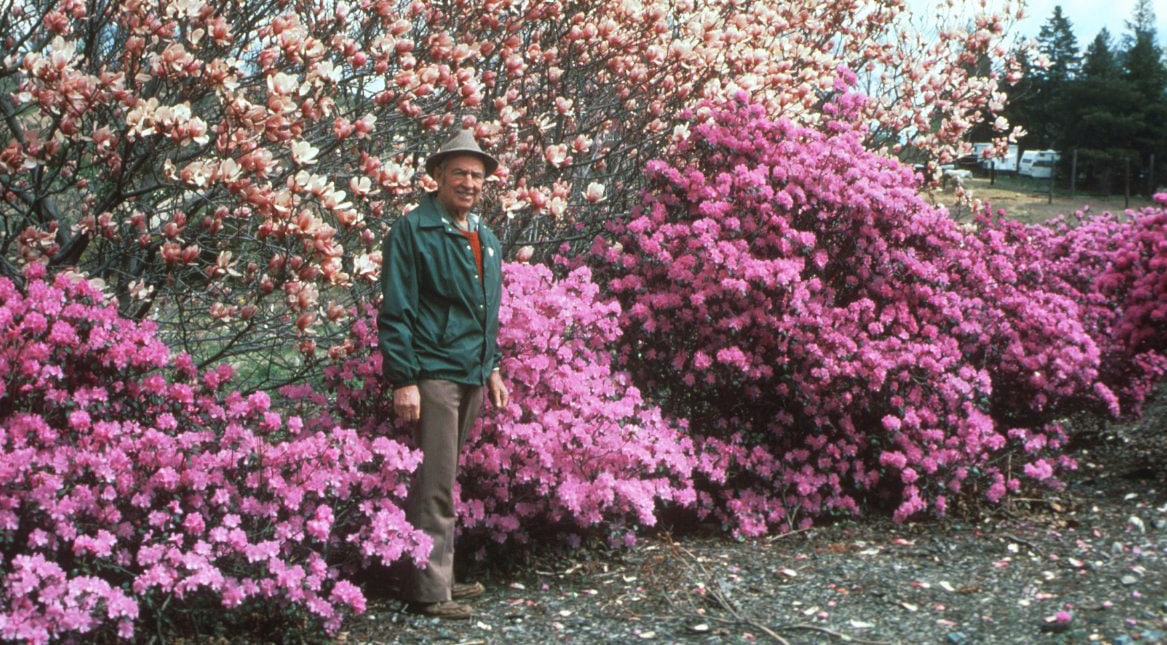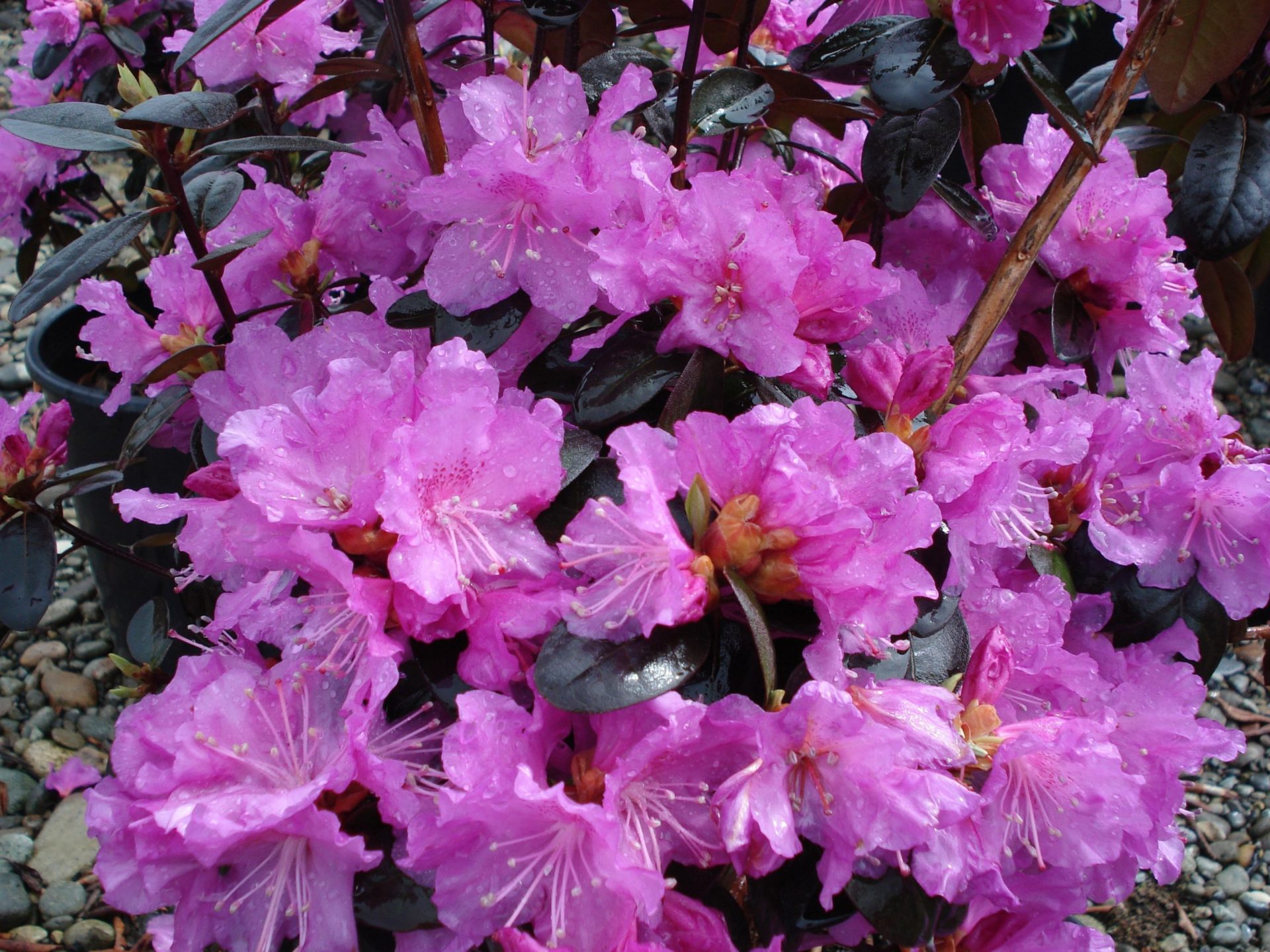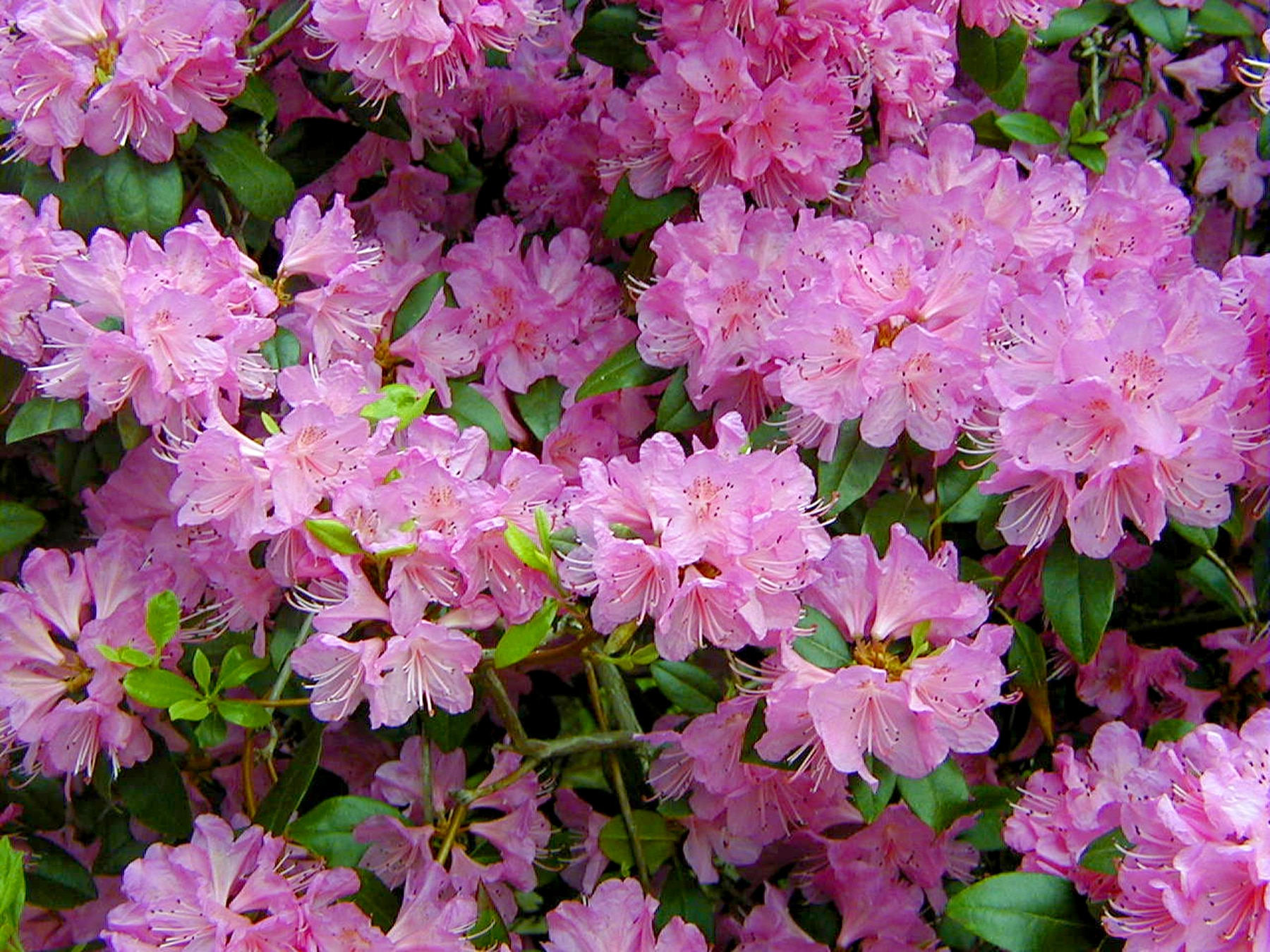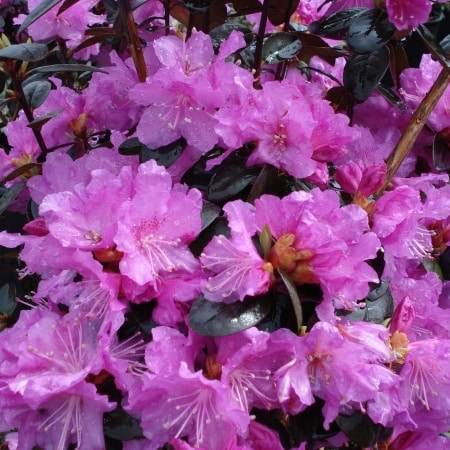Few April sights reenergize our winter-worn malaise so effectively as those brilliant lavender-pink splashes that proclaim SPRING HAS ARRIVED across so many parts of our region. “New England’s most familiar flowering shrub”, claim some, “the rhododendron to which all others are compared”, according to others.
Along with crocus, daffodil, forsythia and magnolia, landscapes across the region give birth to these cheerful, brilliant ‘PJM’ rhododendron flowers to usher-in the new season. Could any sight be more inspiring to our senses after a typical New England winter?

Few people realize that this remarkable plant was developed right here in Massachusetts. Ed Mezitt, the son of Peter J. Mezitt (for whom he named the plant), performed the cross which produced this plant in 1939. Ed had recently graduated from Cornell University and returned to the family nursery business in Weston, MA, full of energy and ideas. Even though this was his first attempt at hybridizing, its results changed forever the appearance of the New England landscape scene.
Growing up helping out in the nursery, Ed often lamented with his family about the dearth of choices available to New England landscapes. Compared to more temperate climates, very few reliably-hardy woody flowering plants were available on the market. Most of the brightly colored azaleas and rhododendrons that thrive in southern gardens proved disappointing after a tough New England winter.
During the 1930’s Ed and his dad began selecting the best forms of the shrubs and trees they grew from seed. They recognized that by progressively collecting seed from those superior forms they were able to gradually improve the gene pool, so next generations offered clearer flower colors, more attractive foliage and increased climate tolerance. But it wasn’t until 1938 that the real breakthrough appeared.

In the winter Ed returned from college, a family acquaintance who was traveling for missionary work to central China requested financial assistance. In exchange for an assurance the friend would send back some plants, Ed and his dad donated some money. It was early March in 1939 when they opened the promised box, and inside found a tiny evergreen “azalea” (later identified as Rhododendron dauricum) fully covered with dark purple flowers. Ed recognized how unusual this was, and wisely collected and put it aside the pollen until later.
Growing in Peter Mezitt’s home landscape was one of the finer selected seedlings of the pink flowering native Carolina rhododendron (Rhododendron carolinianum). When this came into flower in mid May, Ed recognized it as an appropriate choice on which to use the pollen he had saved, and made the cross. That October he anxiously harvested the seed pods, germinated the seed and produced dozens of seedlings. Ed and his dad had just purchased an old farm in Hopkinton, MA to be the future home of Weston Nurseries. It was here that these now three-year-old husky seedlings were planted in the spring of 1944.
“We had all but forgotten this hybrid…until one Sunday in early May in 1945. We were just developing our nursery in Hopkinton, and we were visiting it that morning, having been tied up during the busy season in Weston most of the week. My heart still skips a beat when I recall the reaction of our entire family when we saw that ribbon of brilliant pink running across the hill. My Dad was so enthusiastic about these little dwarf plants – only six to eight inches tall — in full bloom, that he immediately made the remark that this was the most spectacular rhododendron of our time. We named it ‘P.J.M.’ right on the spot and those of us who knew him can see the vigor, excitement and showmanship he possessed perfectly reflected in this plant.” (quote from “The Rosebay”, volume 1, number 1, February 1972.

Perhaps even more important than its flowers are its extreme adaptability, hardiness and year round appeal. Rhododendron ‘PJM’ blooms reliably in virtually any New England garden. It is considered one of the hardiest rhododendrons worldwide.
Distinctively aromatic green foliage changes with the onset of autumn’s colder weather to an intense, lustrous dark mahogany, becoming verdant again as it drops its flowers in spring. Tolerant of wind and cold, it thrives even in the sunniest, most exposed planting locations, rarely damaged by winter. Make sure it is growing in acid, well drained soil for best results.
This April as you enjoy landscapes across this region unfolding this distinct spring harbinger, you’ll now know its history and how it originated, right here in our own backyard!







